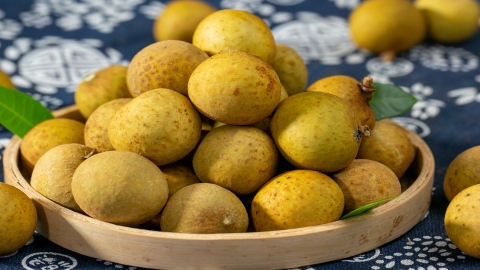What is the difference between dried longan and fresh lychee?
Generally speaking, dried longan and fresh lychee are two different ingredients, differing in their state and processing methods, appearance, taste, nutritional characteristics, and ways of consumption. If differentiation is needed during selection or consumption, one can judge based on their specific characteristics. Here is a detailed analysis:
1. State and Processing Method
Dried longan is a processed product made from fresh longan fruit through drying or dehydrating processes. Fresh lychee, on the other hand, is freshly picked from the tree without undergoing any processing, maintaining its natural fresh state.
2. Appearance
Dried longan has small, round fruits with deep brown or black skin. The texture is dry and hard, with a slightly wrinkled surface. The flesh adheres closely to the seed and is dark brown or reddish-brown in color. Fresh lychee has larger fruits, mostly round or heart-shaped, with bright red or purplish-red skin covered with raised scaly patterns. The texture is relatively soft, with translucent milky white or pale yellow flesh enclosing a larger seed.

3. Taste and Flavor
Dried longan has a soft, chewy texture with a rich, sweet flavor and high sweetness, almost without sourness, and has a unique dried-fruit aroma. Fresh lychee has crisp, tender, and juicy flesh with a sweet taste slightly tinged with acidity. It has a fresh and intense fruity aroma, offering a more refreshing and moist mouthfeel.
4. Nutritional Characteristics
After processing, dried longan has significantly reduced water content, with concentrated sugars, and is rich in glucose, iron, vitamins, and other nutrients, particularly with relatively high iron content. Fresh lychee contains abundant water, vitamin C, glucose, and sucrose, with a higher vitamin C content than dried longan. However, its water and nutrients are more prone to loss.
5. Methods of Consumption
Dried longan is often consumed as a nutritious supplement. It can be eaten directly or used for making soups, porridge, tea, or desserts. It is suitable for long-term storage. Fresh lychee is primarily consumed as a fruit and is not suitable for prolonged storage. Its shelf life at room temperature is short, and it is generally not used in cooking methods such as stewing.
In daily life, one can distinguish between the two based on their appearance and physical state. Although dried longan is nutritious, it has a high sugar content, so consumption should be moderated, especially for individuals with elevated blood sugar levels. Fresh lychee may cause excessive internal heat in the body and should not be consumed in excess. When selecting fresh lychee, choose fresh and plump fruits. For storage, keep dried longan in a dry, well-ventilated place, while fresh lychee needs refrigeration and prompt consumption to avoid spoilage.






